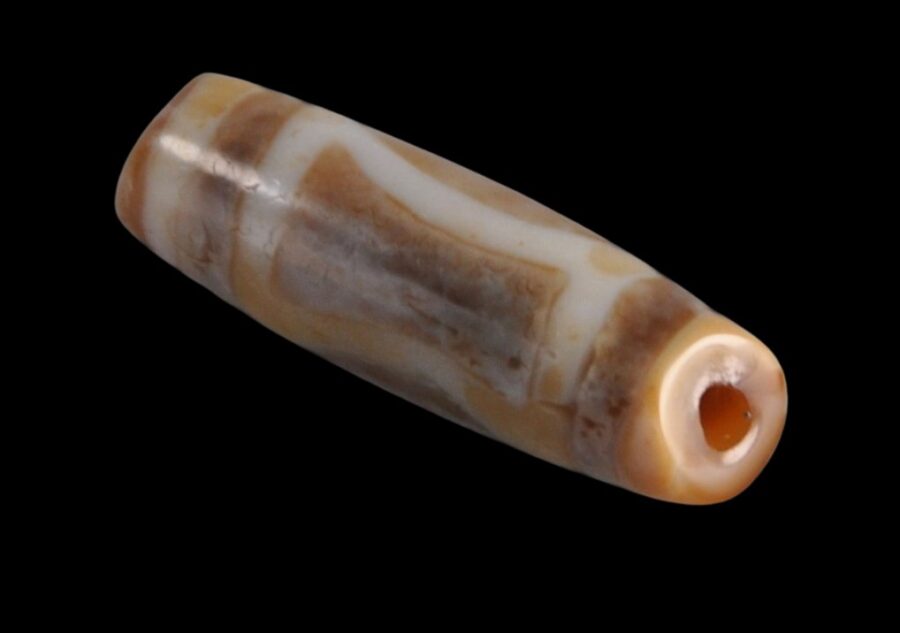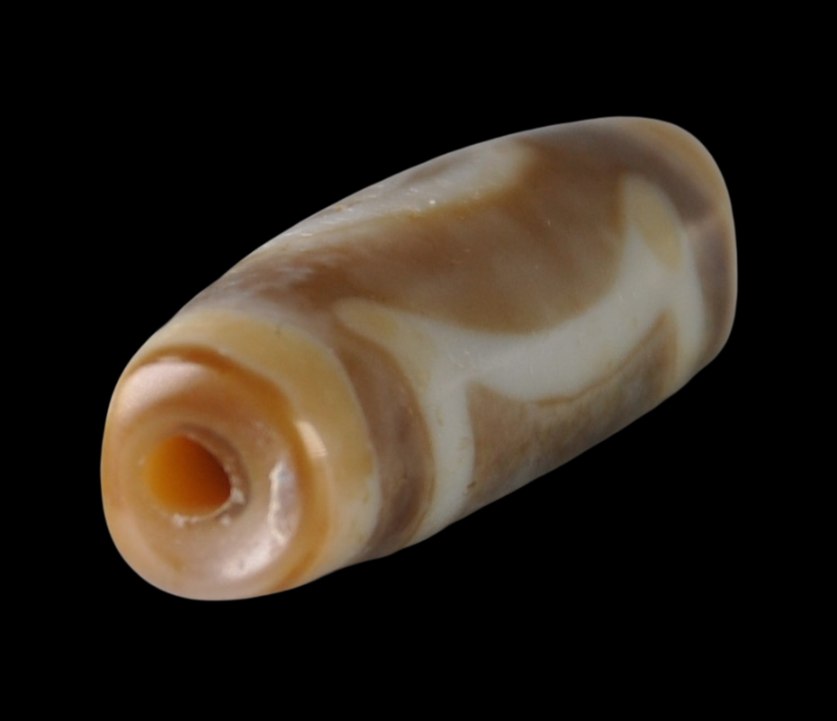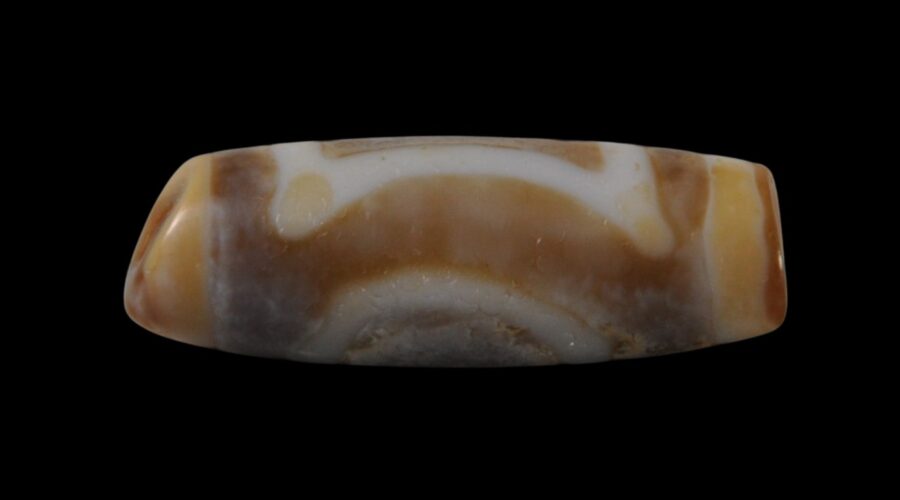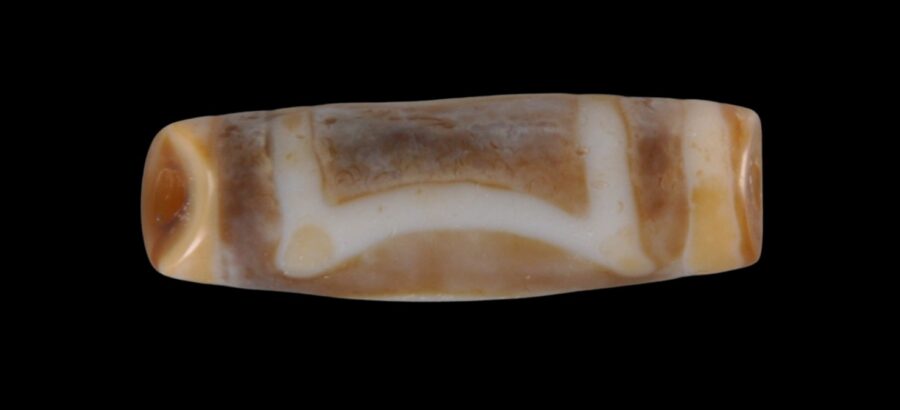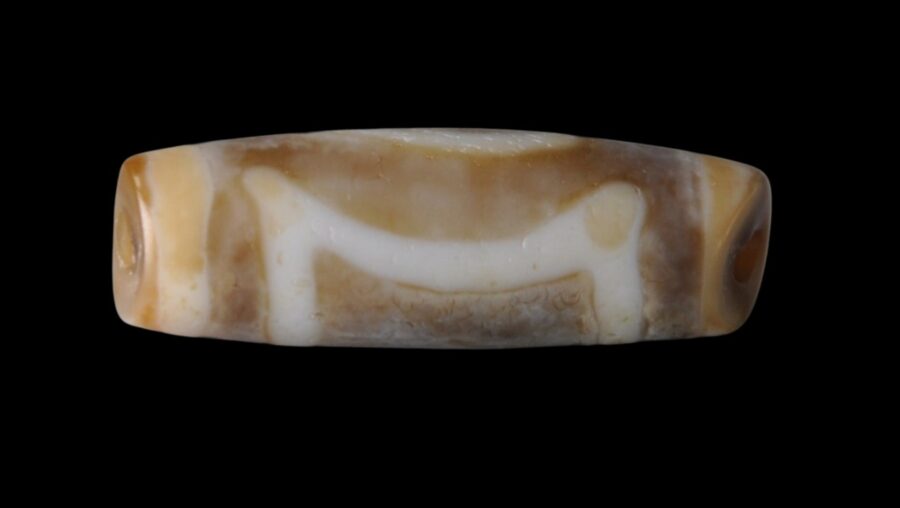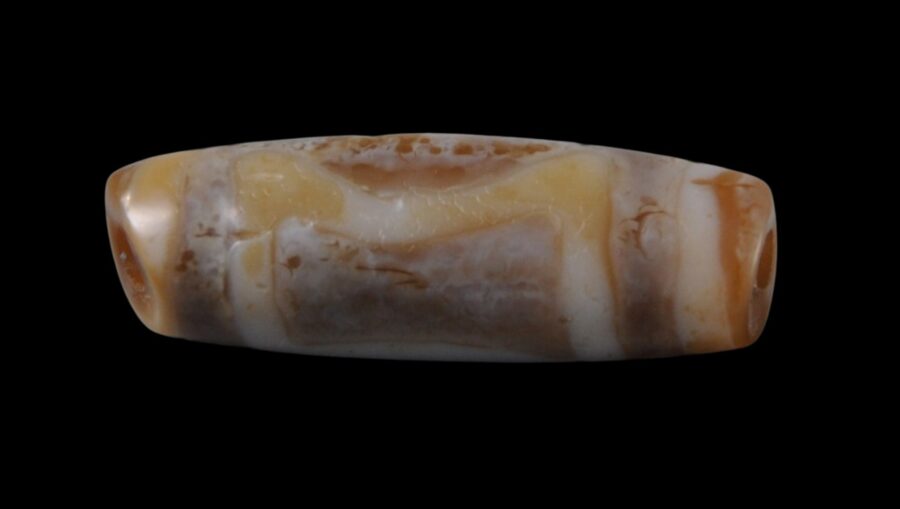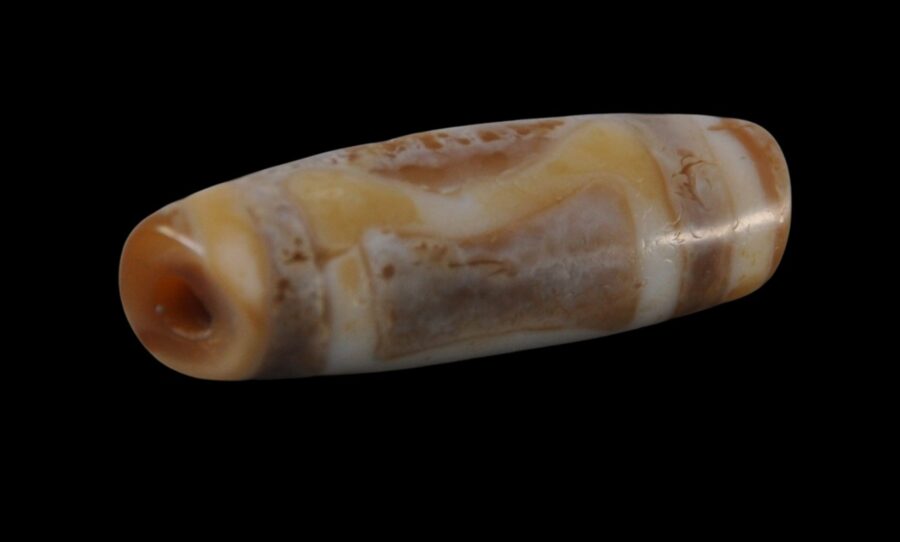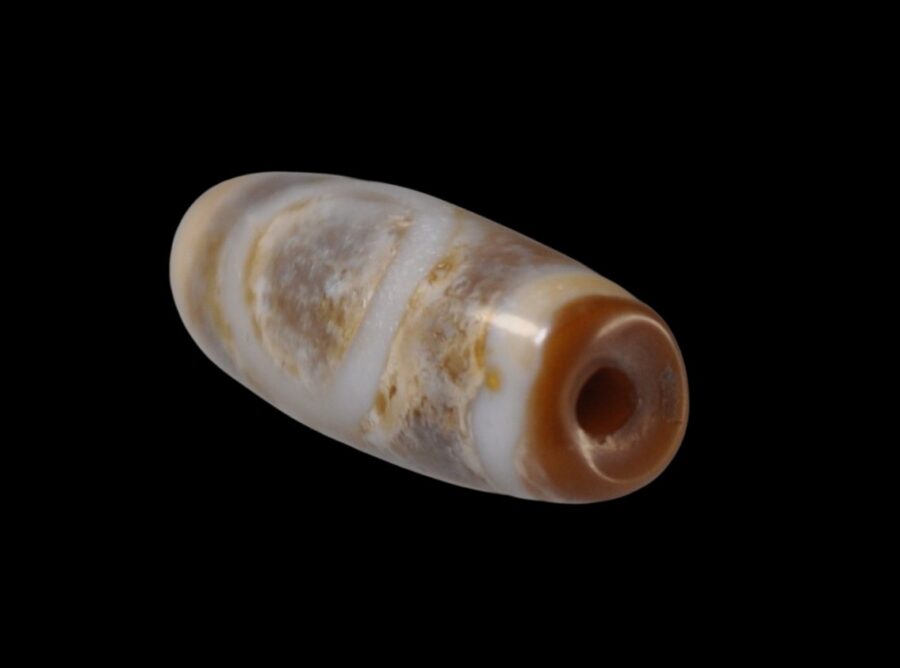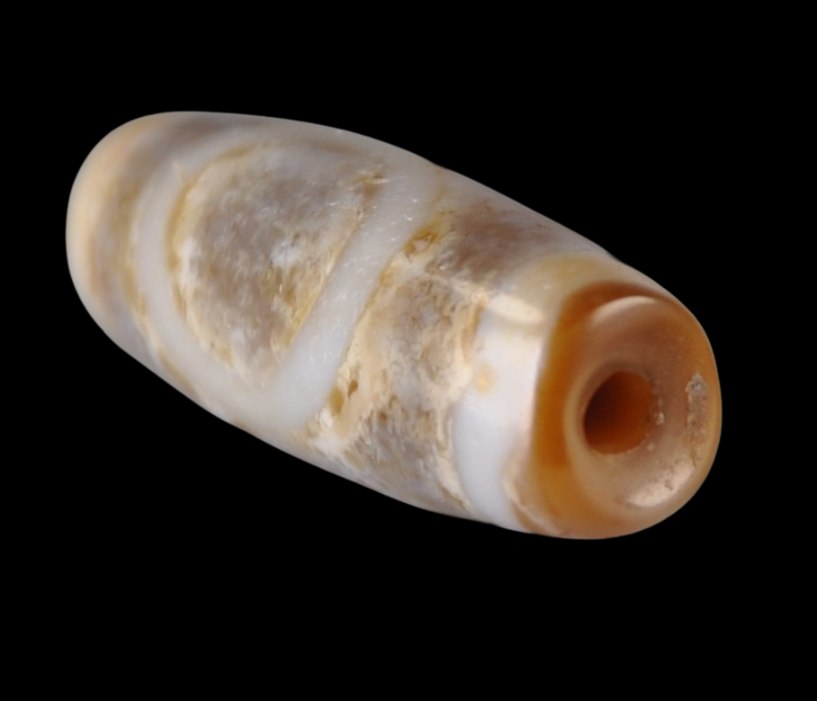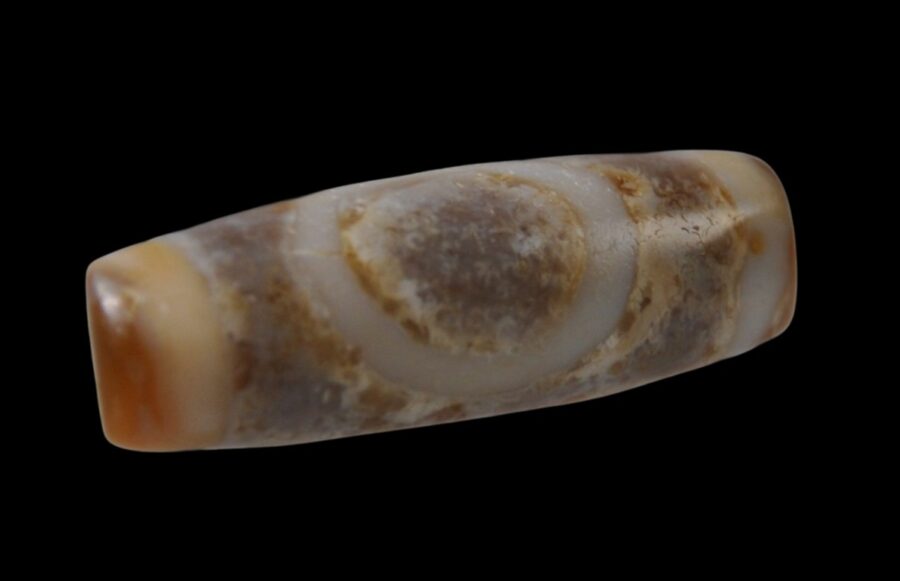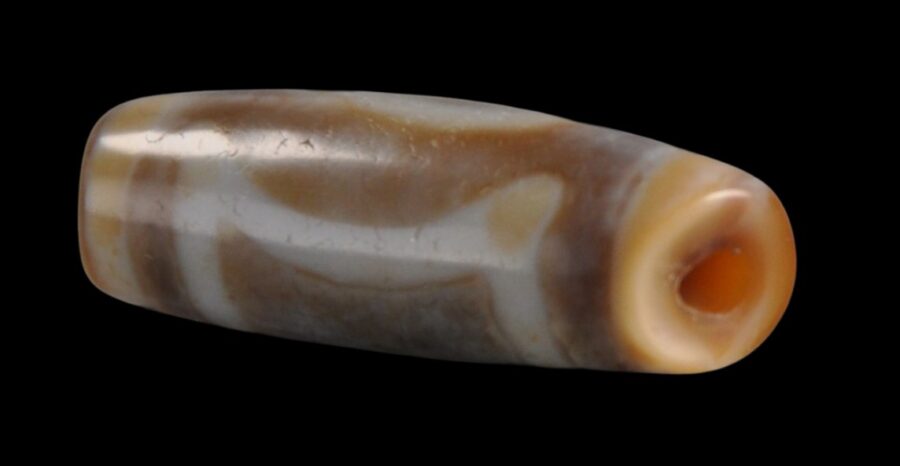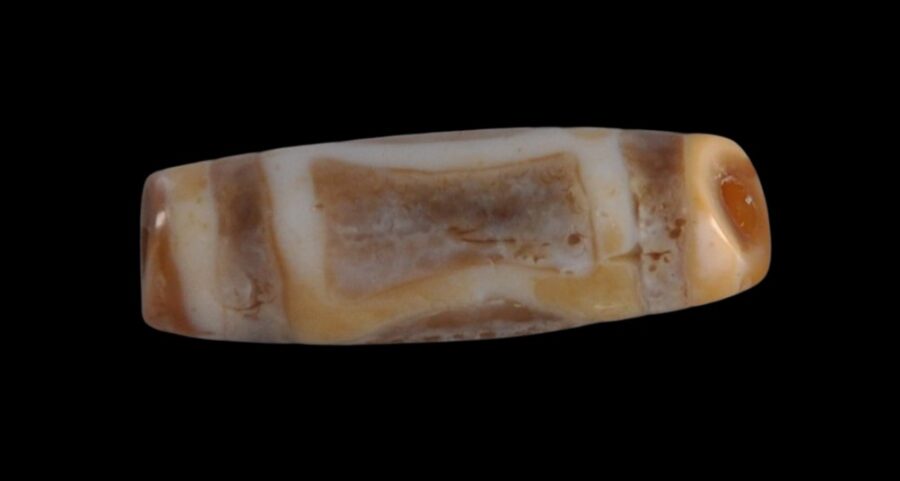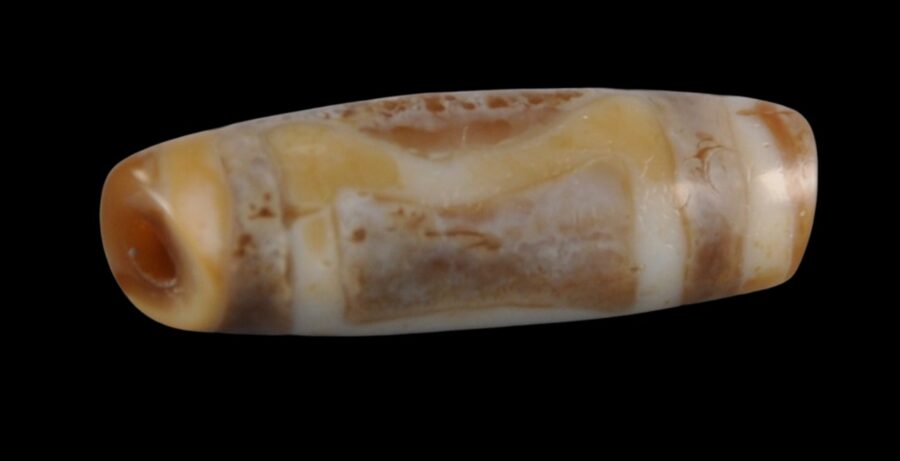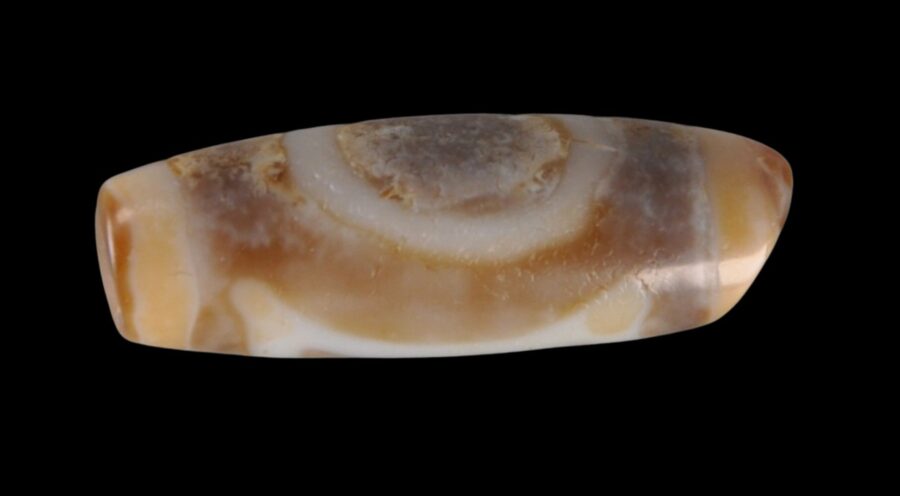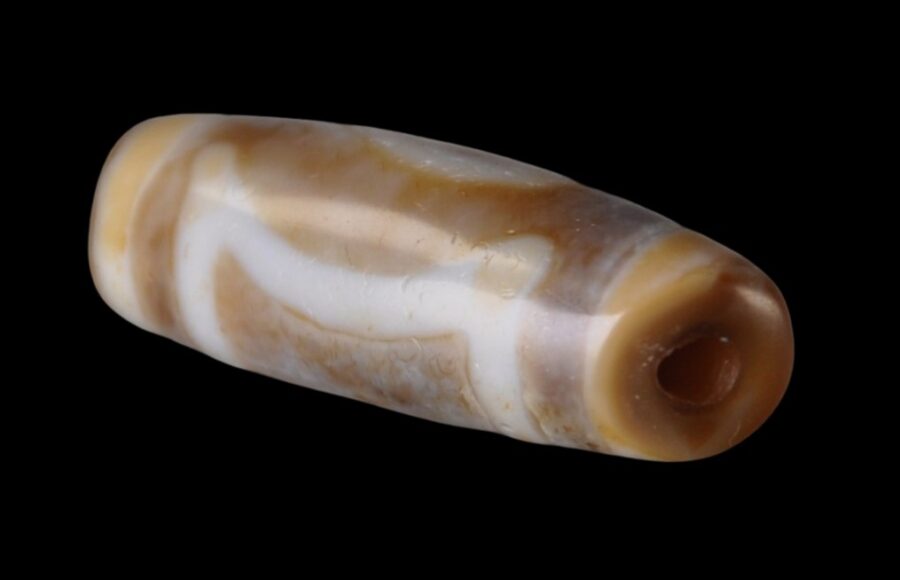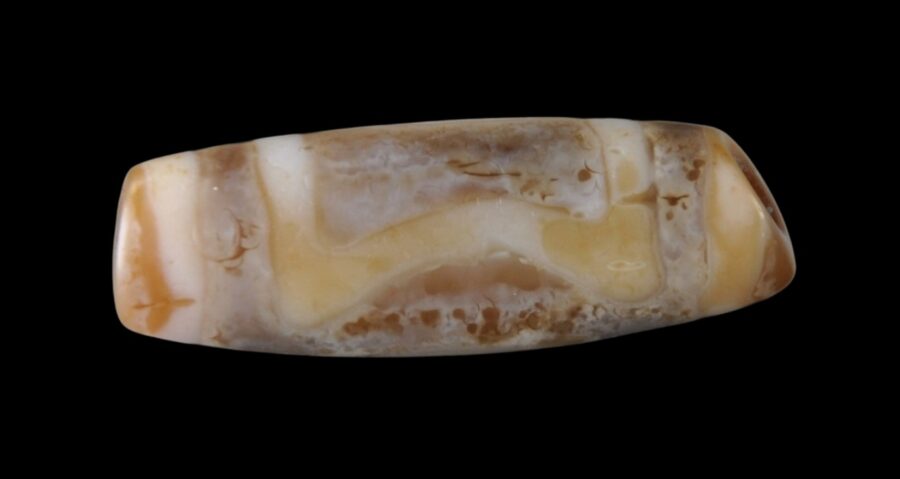Dzi beads are prized as protective and healing amulets. This fine, ‘pure’ dzi bead is of unquestionable authenticity. It is ancient, of tapering, barrel-form, and of brown agate that has had designs etched into it – an oval on one side an a concave rectangle or hour glass motif on the other. This is known as the ‘Earth Door/Sky Door’ pattern or sakor namkor pattern in Tibetan, and in Chinese, it is known as the equivalent of the ‘Heaven and Earth’ pattern. The oval represents the sky and the rectangle represents the earth.
The time and place of manufacture of dzi beads is a mystery. Tibetans and other Himalayan people valued the beads highly, and some regarded the beads as having supernatural origins: it was believed that they had either fallen to earth being dropped by the sky gods, or that they were created deep within the earth. It is unlikely that the beads were made in Tibet itself and possibly came from Persia, India, or Burma, during ancient times.
The example here has all the signs expected of a good quality ‘pure’ dzi: it is well-worn from ritualistic rubbing, wear from being against the skin when worn, and there is plenty of wear at each end form centuries of rubbing against the stringing. It has developed a clear patina from centuries of use.
The hole drilled through the centre of the bead is uneven as might be hoped for, and, as mentioned, it has wear and is generally misshapen from centuries of being rubbed by the cords from which it was suspended. (New beads are machine-drilled and the holes in them typically are straight and uniform.)
Dzi beads are believed to protect their wearers. When a bead spontaneously breaks then it is believed to have served its purpose – it has absorbed danger and broken as a consequence.
This example is not a dark brown or black, but more of a light brown. Some Tibetans believe that as beads absorb danger and illness they become lighter in colour. So this bead is likely to have served its past owners well in terms of protecting them.
In Tibetan pharmacopoeia, shavings or nicks taken from dzi beads were ground into powder, mixed with other ingredients, and swallowed for medical reasons. This also explains why some truly ancient dzi beads appear shortened, but also why many must have disappeared altogether and hence the rarity of ancient examples and the propensity for modern copies.
The beads have become so valuable that few Tibetans own more than a few beads and are wary of wearing them openly for fear of theft.

A young Tibetan noble woman wearing necklaces that include multiple dzi beads (Lhasa, early 20th century).
References
Allen, J., ‘Tibetan zi beads’, in Arts of Asia, July-August 2002.
The Heart of a Sacred Kingdom – Her Majesty the Royal Grandmother Ashi Kesang Choeden Wangchuck: A Lifetime of Service to the People and Kingdom of Bhutan, Gatshel Publishing, 2017.


